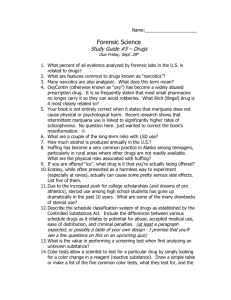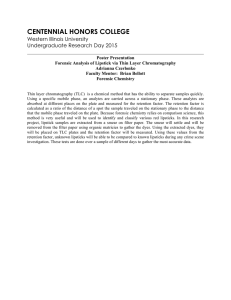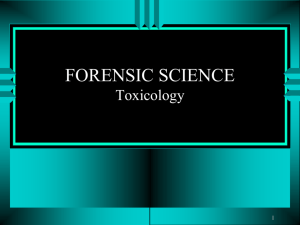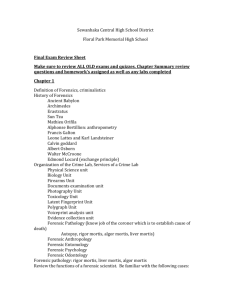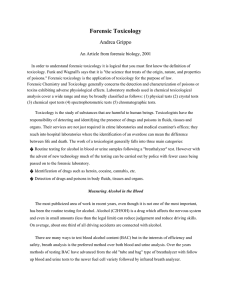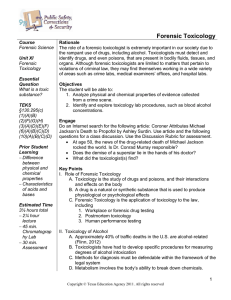DOC
advertisement
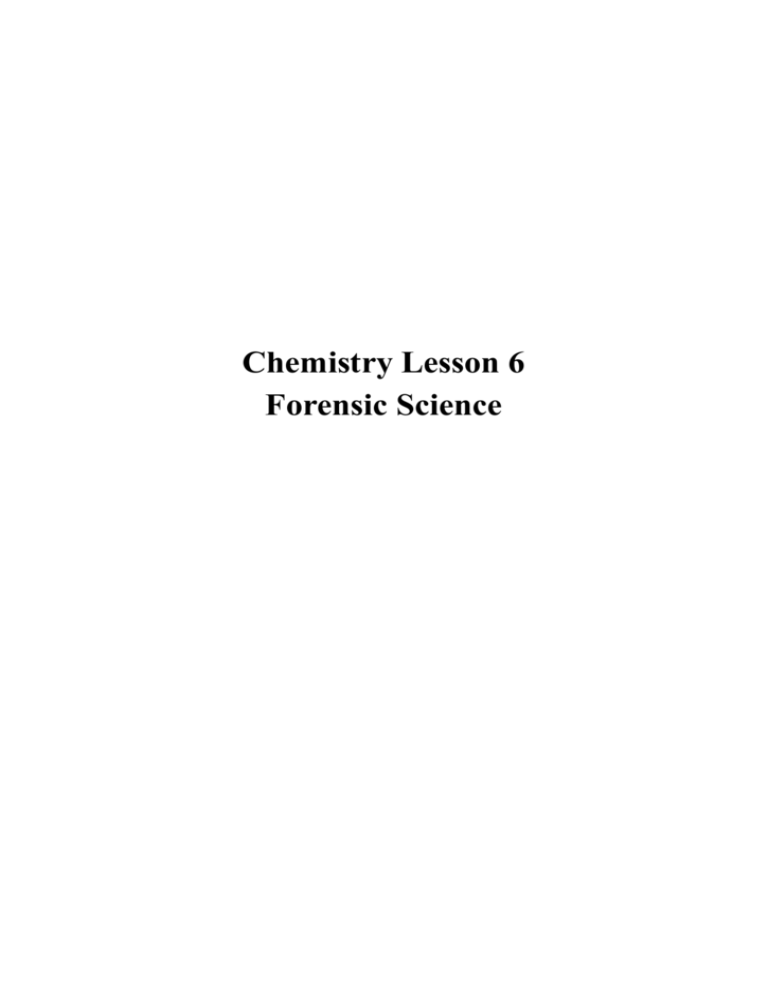
Chemistry Lesson 6 Forensic Science Learning Objectives: In this chapter you will learn: The definition and scope of forensic science The basic services provided by the crime laboratories The key steps for processing a crime scene. The fundamental principles of fingerprints and how to detect them The principles of chromatography Suggested Time Allocation: Part Theme Powerpoint Slides Suggested time allocation: 1 Some basics about forensic science 3 – 14 30 mins 2 Detecting fingerprints 15 – 18 30 mins 3 Principle of chromatography 19 - 27 60 mins Total time suggested: 120 mins (2 hours) Teachers Notes: 1. 2. 3. 4. This module covers some basic information about forensic science and the principle of chromatography. Knowledge prerequisites – it is recommended that the students have learnt the following concepts previously: - Introductory organic chemistry This module only covers a very brief outline about the services provided by a forensic laboratory. Students are advised to visit the suggested relevant websites for further information. Teachers are advised to supplement the classroom teaching with some demonstrations / lab activities on paper chromatography or thin-layer chromatography. Suggested Web-resources for Further Study: 1. http://en.wikipedia.org/wiki/Forensic_science - Wikipedia – Forensic science 2. http://www.all-about-forensic-science.com/ - A free and comprehensive guide to the world of forensic science 3. http://www.exploreforensics.co.uk/ - Explore forensics – Forensic science for beginners 4. http://www.newscientist.com/topic/crime-and-forensics - New Scientist – Crime and forensics 5. http://www.chromatography-online.org/Principles/contents.html - Online book – Principles and Practice of Chromatography 6. http://www.chem.ubc.ca/courseware/121/tutorials/exp3A/columnchrom/ - Chromatography tutorial



